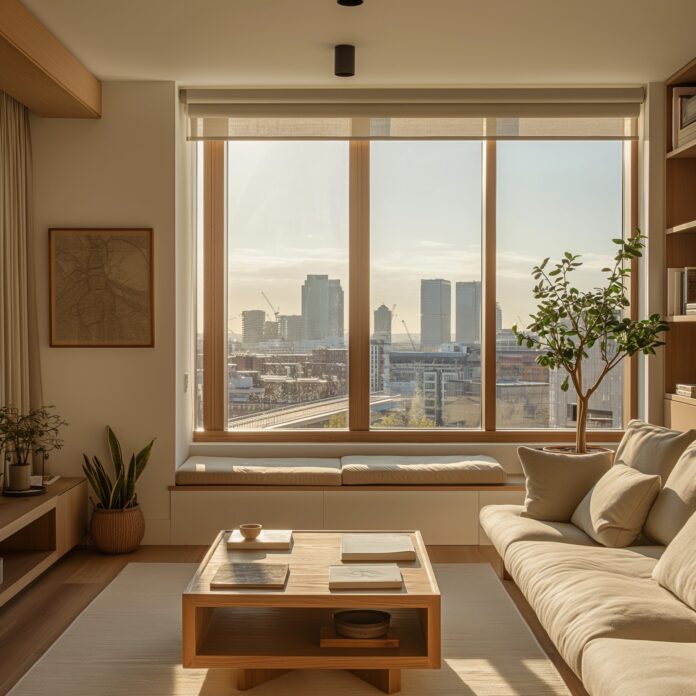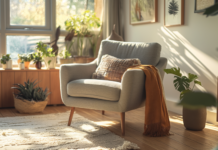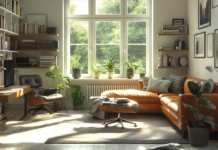In today’s world, where the pace of life seems ever-accelerating, the concept of home as a sanctuary has become increasingly significant. The journey towards creating such a peaceful haven is beautifully encapsulated in the principles of minimalist home decor. This design philosophy, particularly relevant for apartment living, offers a refreshing counterpoint to the complexities of modern life, emphasising simplicity, functionality, and serenity.
Simplicity & Clarity
At the heart of minimalist design lies the celebration of simplicity and clarity. This approach advocates for clean lines and uncluttered spaces that highlight the essence of form. By minimising distractions, we foster environments that are not only visually pleasing but also deeply calming. The focus on simplicity extends beyond the physical layout of spaces to include a thoughtful consideration of colour, form, and function, ensuring that each element contributes to a harmonious and cohesive whole.
Functionality & Purpose
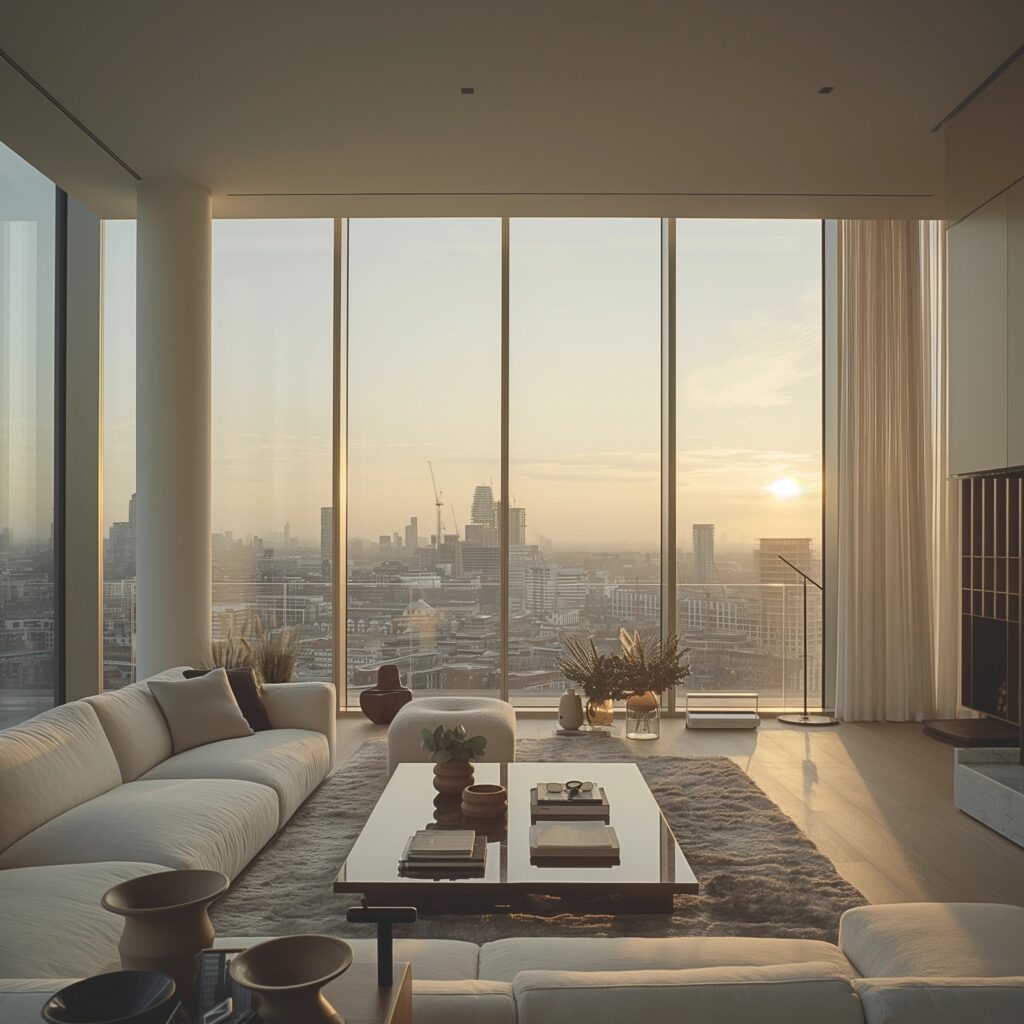
Minimalism champions the belief that every item within our living spaces should serve a practical purpose or bring joy. This principle encourages a mindful approach to decorating and furnishing, where choices are made deliberately and with intention. The result is a living space devoid of unnecessary clutter, where the utility and aesthetic value of each piece are given the prominence they deserve. This approach not only enhances the functionality of our homes but also aligns our living environments with our personal values and lifestyle needs.
Neutral Palette & Texture
A cornerstone of minimalist decor is the use of a neutral palette complemented by varied textures. Subdued shades such as whites, beiges, and greys create a serene and calming backdrop, while the introduction of different textures adds depth and interest. This balance of simplicity and complexity ensures that our living spaces are visually engaging yet remain tranquil and welcoming. The careful selection of materials and finishes plays a crucial role in achieving this delicate balance, enriching our homes with a tactile and visually soothing experience.
Natural Light & Elements
The integration of natural light and elements is pivotal in minimalist design. Maximising natural lighting not only elevates the aesthetic appeal of our spaces but also enhances our well-being and promotes energy efficiency. The use of organic materials like wood, stone, and live plants introduces warmth and vibrancy, fostering a connection with the natural world. These elements imbue our homes with a sense of tranquillity and grounding, reminding us of the inherent beauty and simplicity of nature.
Declutter & Quality
A fundamental aspect of minimalism is the ongoing process of decluttering, which involves a continuous reassessment of our possessions. This practice encourages us to remove excess and invest in fewer, high-quality pieces that stand the test of time in terms of style and functionality. Such a commitment to quality over quantity not only declutters our physical spaces but also promotes a more mindful and sustainable way of living. By focusing on the essentials, we create homes that are both elegant and comfortable, free from the fleeting distractions of consumerism.
Open Space
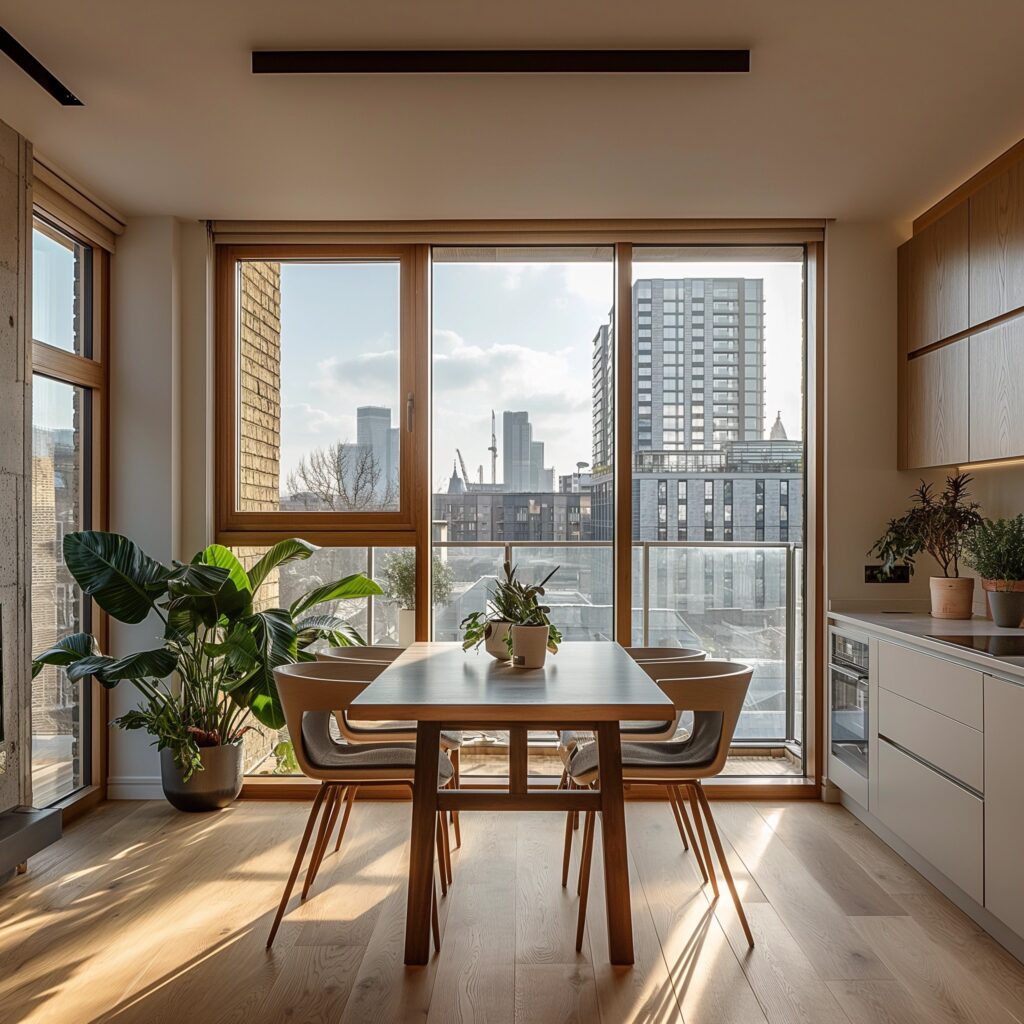
Maintaining open, breathable living areas is crucial in minimalist home decor, especially in the context of apartment living. The pursuit of visual harmony involves creating a cohesive aesthetic flow throughout the home, where each room seamlessly connects with the next. This sense of continuity and unity is achieved through the careful selection and placement of furniture and decor, enhancing the overall sense of spaciousness and tranquillity.
Harmonising with Nature
One of the most profound aspects of minimalist design is its ability to harmonise indoor spaces with the natural world. Incorporating elements like indoor plants, natural wood finishes, and stone accents can transform an apartment into a refreshing oasis amidst the urban hustle. These organic touches not only enhance the visual appeal of our homes but also improve air quality and create a sense of calm and relaxation. The strategic use of natural light further amplifies this connection, making our living spaces feel more open and inviting while reducing the reliance on artificial lighting.
Investing in Multi-functional Furniture
In the context of apartment living, where space can be a precious commodity, the emphasis on functionality and purpose takes on added significance. Multi-functional furniture pieces, such as sofa beds, extendable dining tables, and modular storage units, become invaluable assets. These versatile items not only save space but also enhance the flexibility and usability of our living areas. By choosing furniture that adapts to our needs, we embrace the minimalist principle of ensuring that every item serves a practical purpose, thereby maximising the efficiency and comfort of our homes.
Cultivating Spaces for Well-being
The minimalist approach extends beyond the physical attributes of decor to include creating spaces that promote well-being and mindfulness. This could involve dedicating areas within the home for meditation, yoga, or relaxation, where minimal distractions allow for deeper focus and reflection. The careful selection of calming colours, soft lighting, and comforting textures can further enhance these spaces, making them sanctuaries for mental and emotional rejuvenation.
Practicing Mindful Consumption
At its core, minimalism advocates for a more conscious and intentional lifestyle, which includes mindful consumption. This involves making deliberate choices about what we bring into our homes, prioritising quality over quantity, and considering the environmental impact of our purchases. By adopting a more selective approach to consumption, we not only reduce clutter but also contribute to a more sustainable and ethical world. This mindful practice extends to decluttering, where we regularly reassess our possessions and let go of items that no longer serve us, ensuring our living spaces remain aligned with our current needs and values.
Personalising Minimalist Spaces
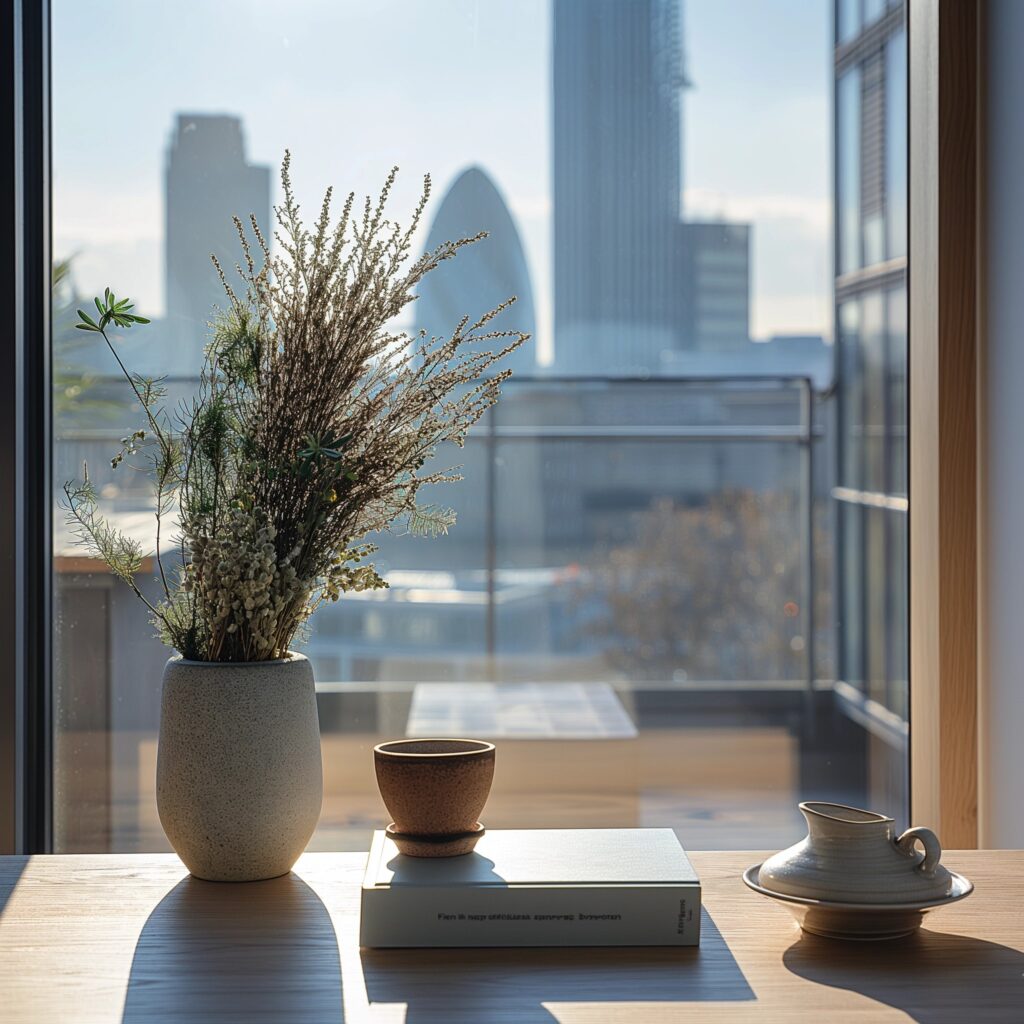
While minimalism advocates for simplicity and functionality, it also offers the flexibility to infuse personal style and character into our homes. Artwork, family photos, and treasured mementoes can be thoughtfully integrated into the minimalist decor, adding warmth and personality without compromising the overall sense of calm and order. Selecting pieces that hold significant emotional value or tell a story ensures that our living spaces remain personal and inviting. The key is balance—choosing a few impactful items rather than overwhelming the space with decorations.
Adapting to Life Changes
A fundamental aspect of minimalist living is its adaptability to life’s evolving circumstances. Whether it’s a career change, the arrival of a new family member, or a newfound hobby, our living spaces should be able to accommodate these changes with minimal disruption. This adaptability is achieved through careful planning and the selection of versatile furnishings and layouts that can easily be reconfigured. By anticipating and designing for change, we create resilient living spaces that grow and evolve with us.
Technology and Minimalism
In the modern world, technology plays a significant role in our daily lives. Integrating technology into minimalist living involves selecting devices that enhance functionality without creating clutter or distraction. Smart home devices that can be controlled via a single app or voice commands offer convenience while maintaining a sleek and unobtrusive presence. The thoughtful integration of technology in minimalist homes ensures that our living spaces remain connected and efficient without compromising the serene and uncluttered aesthetic that defines minimalism.
Community and Sharing Economy
Minimalist living also embraces the concepts of community and the sharing economy. In apartment complexes and urban environments, communal spaces and shared resources can reduce the need for individual ownership of infrequently used items, such as tools or recreational equipment. Participating in sharing platforms and community initiatives not only fosters a sense of belonging and cooperation but also aligns with minimalist principles by reducing waste and promoting efficient use of resources.
The Journey Continues
Ultimately, the minimalist journey is a deeply personal one, continuously evolving as we navigate through life. It challenges us to question what we truly need and value, encouraging a lifestyle that is both thoughtful and intentional. By applying minimalist principles to our apartment living, we create spaces that are not just aesthetically pleasing but also deeply reflective of our individual journeys, aspirations, and values. These spaces become our sanctuaries, offering peace, clarity, and inspiration amidst the complexities of modern life.
As we conclude this exploration of minimalist home decor, it’s clear that the journey is about much more than decluttering or adhering to a specific design aesthetic. It’s about crafting a lifestyle that prioritises well-being, sustainability, and meaningful connections. In doing so, we not only transform our physical spaces but also pave the way for a more thoughtful, intentional, and fulfilling way of living.


